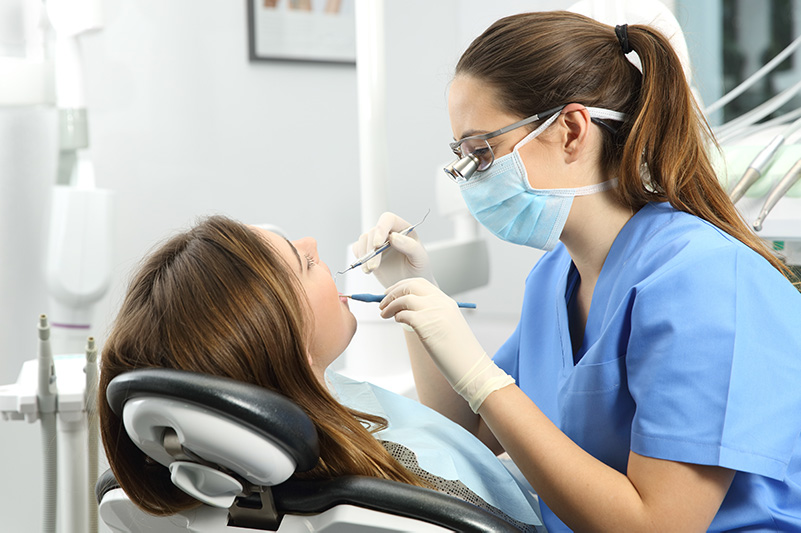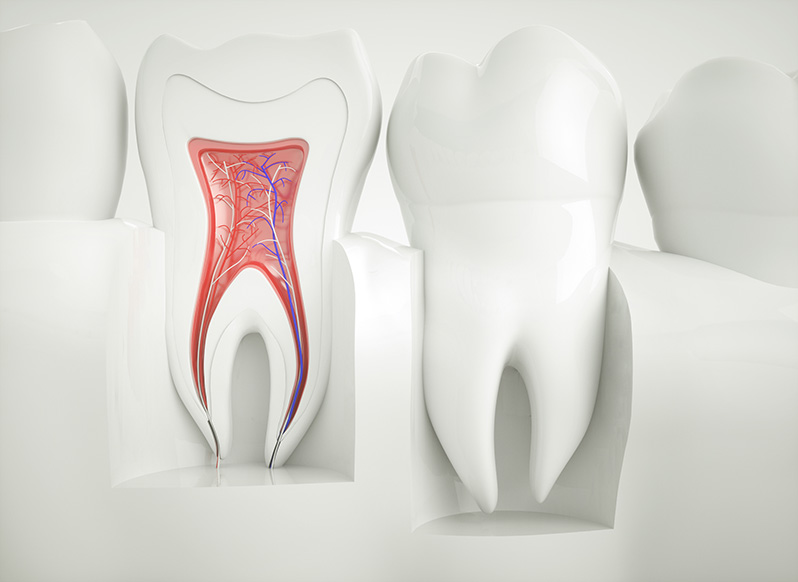General Dentistry

General Dentistry involves the prevention, diagnosis and treatment of a wide variety of conditions, disorders and diseases affecting the teeth, gums and maxillofacial (associated with the jaw and face) region of the body.
General dentists provide services related to the general maintenance of oral hygiene and tooth health.
Ideally, dentistry is preventative. The American Dental Association (ADA) recommends that you visit your dentist regularly – at least once every six months – to ensure proper oral hygiene and functionality. Regular checkups and oral health maintenance prevent the development of serious dental problems that can require costly treatment. If you remain vigilant and visit your dentist regularly, you can enjoy exceptional dental health.
Cosmetic Dentistry

Cosmetic dentistry focuses on improving the appearance of the teeth, mouth and smile. Cosmetic dentistry is typically an elective treatment or service.
Cosmetic treatments may also provide restorative benefits. For example, dental fillings are a common procedure used to treat decayed teeth. Previously, most dental fillings were composed primarily of gold, amalgam and other materials that left visible dark spots on the teeth.
Modern dental fillings may be considered cosmetic to a certain extent because you can select fillings made of porcelain or composite materials that closely match the color of your teeth, thus maintaining the natural appearance of your teeth and smile. Many people may choose to have their older fillings replaced with newer, tooth-colored fillings to enhance their appearance.
Preventative Dentistry: Hygiene

Preventive dentistry, also known as Dental Hygiene, is the practice of caring for your teeth to keep them healthy. This can help you avoid cavities, gum disease, enamel wear, and more.
There are many forms of preventive dentistry, such as daily brushing, flossing, and dental cleanings. To maintain optimal oral health, the American Dental Association (ADA) recommends visits to the dentist at regular intervals determined by your dentist. These practices are designed to ensure that teeth are clean, strong, and white. Children should be taught proper oral hygiene at an early age.
Emergency Dentistry

Arroyo Grande Dental Care provides patients with top-quality emergency dental care when they need it most. We are open five days a week to serve you.
If you are experiencing a dental emergency please call our front office at (805) 481-9033.
If this is a serious or life-threatening emergency, please call 9-1-1 or go to the nearest hospital.
Dental Implants

Dental implants are a very close alternative to healthy, natural teeth. They allow you to live life confidently so that you can enjoy daily activities without worrying about your teeth.
Modern dental implants have been used successfully for over 30 years. They are the strongest devices available to support replacement teeth, they generally look, feel, and function like your natural teeth.
When performed by a trained and experienced dental implant dentist, dental implant surgery is one of the safest and most predictable procedures in dentistry.
Teeth Whitening

Your smile is important. It’s one of the first things you notice when you meet someone. Whitening can get your smile looking its best. A whiter, brighter smile is beautiful – it can help you feel better about yourself and make a memorable impression.
Arroyo Grande Dental Care offers ZOOM Teeth Whitening.
Root Canals

During the course of your dental examination we may determine that a root canal is required to treat the symptoms that your are experiencing. Some root canal procedures can be performed right here in our office. Depending on your individual situation we may, at times, refer you to another local practice that specializes in endodontics.
An endodontist is a dentist that specializes in performing root canals, in addition to other specialized dental procedures involving the soft inner tissue of the teeth.
We work closely with several local endodontists to ensure that you receive the best possible care both before, and following your procedure.
Dental Crowns

A crown is a cover or “cap” your dentist can put over a tooth. The crown restores the tooth to its normal shape, size, and function. A crown can make the tooth stronger or improve the way it looks.
When are dental crowns most commonly used:
- If a cavity is too large for a traditional type filling
- If a tooth is cracked, worn down, or otherwise weakened
- Following a root canal treatment – a crown is used to cap and protect the restored tooth
- If a patient wants to cover a discolored or badly shaped tooth to improve cosmetic appearance.
Additional Dental Services
Bonding
Bonding is more of a generic term that is used to describe several procedures. When we place a composite filling, we are doing a “bonding” of the composite to the tooth. When we close a space in the front teeth, sometimes that is referred to as bonding. Closing these spaces (or “diastemas”) can radically improve a person’s look as well as self confidence. Bonding can also be the term used when we place a veneer (or bond a veneer) over a tooth. Again, this is primarily for closing spaces, rotating teeth and lengthening teeth or changing their color. The procedure is relatively common and many people have benefited from the different types of “bonding” available today.
Composites
Composite or white plastic fillings, are used when aesthetics is a concern. Many of the currently available materials used for composites are nearly as strong as silver fillings on the chewing surfaces, and they do excellently in the grooves, and dramatically lower the development of cavities.
Dentures
Dentures are false teeth. They are typically made from impressions (molds) that are taken of the inside of the mouth and they are made of a type of plastic or porcelain that duplicates the shape, size and function of the teeth.
Extractions
Dental extractions are usually done when a tooth is so badly decayed, fractured or causing a chronic infection, such that it can not be restored. These days, we attempt to save as many teeth as possible using all of the latest technology available, however, there are times when nothing can be done and the tooth needs to come out.
Intra-oral Cameras
The dental profession has recognized Intra-oral cameras as an invaluable tool in the dental exam. By magnifying a tooth 20 to 30 times, we are able to see things that we couldn’t see with just an overhead light and a mouth mirror. In addition, and more importantly, it allows our patients the opportunity to see their own teeth on the TV monitor so they can see what it is we are talking about when we describe things we see going on in their mouth. And secondly, it gives us an additional tool to use should there be insurance involved to help explain treatment better to them.
Mouthguards
If you play contact sports such as basketball, hockey, football, judo, karate, martial arts, skateboarding, racquetball, soccer, squash, wrestling, volleyball and other similar sports, you may wish to talk with us about a mouthguard to protect your teeth
Periodontal Treatment
When it has been a while since your last cleaning, or if you have deep pockets around your teeth, then you are a candidate for a more involved treatment to restore your teeth and gum tissues back to optimum health. Without proper gum support, you can still lose a tooth, even if it doesn’t have a cavity. Periodontal surgery is done when the extent of the bone loss is such that the bone is irregular and jagged and the bacteria can get into the area around the tooth, however, you can’t get in there to clean it. As a result, the bacteria produce an acid that eats away at the bone and causes disease. The accumulation of the bacterial by-product and the debris from the tooth together can cause plaque. If left on long enough, that can lead to tarter (which is harder to clean off). If this is left on the tooth for many months, this can begin to calcify and demineralize the outer structure of your tooth and bone. As this occurs a build-up gets larger and creates a “shelf” that doesn’t allow a person to get a toothbrush under the gumline. If you can’t clean under the gumline, then bone loss can occur and this can lead to tooth loss. Our hygienists have attended several additional courses on periodontal therapy and soft-tissue management.
Porcelain Veneers
Thin porcelain covering the tooth. These can be made as a conservative approach to replacing larger portions of the tooth when esthetics is a concern. They are often used to close gaps, change the color of teeth and modify teeth shapes instantly – sometimes called – “Instant Orthodontics”.
Sealants
Sealants are plastic coatings that are placed on the etched surface in the grooves of teeth-typically on the back molars and sometimes on pre-molars. The procedure is fairly straight-forward and generally can be done without anesthetic at all. We place sealants to help prevent cavities from developing in those areas that the toothbrush cannot clean – such as the pits and fissures of the teeth.
